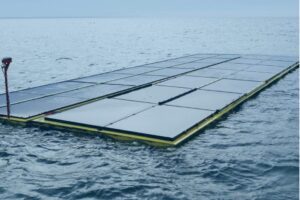The creation of an Australian hydrogen industry based around fossil gas could lead to significant increases in greenhouse gas emissions, as well as higher costs, according to new research from the Australian National University.
The findings, published in the journal Applied Energy, show that hydrogen production from gas could lock in higher Australian emissions and higher costs compared to what could be produced using renewable energy sources.
Even when paired with carbon capture and storage technologies, the production of hydrogen from fossil gas still poses a “serious threat” of significant fugitive emissions.
“Our work highlights that large investment in fossil fuel based hydrogen with CCS could be risky, locking in a new fossil fuel industry with significant emissions, and one that is likely to be out-competed by renewable technologies in the future,” said the study’s co-author, Dr Fiona Beck from ANU’s Institute for Climate, Energy and Disaster Solutions.
“Hydrogen made from natural gas leads to more fugitive emissions – methane that is leaked into the environment during the extraction and processing of natural gas – compared to just burning natural gas directly.”
The researchers found that a carbon price of between $22 and $46 per tonne would be needed to make hydrogen produced using fossil fuels, and carbon capture and storage cost-competitive with fossil hydrogen production without stored carbon.
“At the same time, there are indications that electrolysis with renewable energy could become cheaper than fossil fuel with CCS options, possibly in the near-term future,” the research paper says.
“Establishing hydrogen supply chains on the basis of fossil fuels, as many national strategies foresee, may be incompatible with decarbonisation objectives and raise the risk of stranded assets.”
Given fossil gas is mainly made up of methane gas, a potent greenhouse gas with a global warming potential time 28 times higher than carbon dioxide, emissions that escape during the extraction, transport and processing of fossil gas have the potential to be a significant contributor to further global warming.
The boom in gas extraction and LNG production in Australia has led to significant increases in Australia’s fugitive emissions, at times entirely cancelling out the emissions cuts being achieved by an electricity sector rapidly transitioning to wind and solar.
“We need to rapidly reduce methane emissions to have a chance of limiting global warming to below 1.5 degrees Celsius,” Dr Beck said.
“Fugitive emissions are the second-largest source of methane pollution and rates are rising due to the expansion of unconventional natural gas production that uses fracking.
“Developing a new, large-scale, low-emissions hydrogen industry based on natural gas undermines these efforts and ignores the dangers that fugitive emissions pose to our environment.”
The ANU research team said that national hydrogen strategies, including Australia’s National Hydrogen Strategy prepared by former chief scientist Dr Alan Finkel, have not accounted for fugitive emissions when considering the production of hydrogen using fossil gas.
They stress that these strategies must include consideration of fugitive emissions from sources of fossil fuels to properly assess both the future costs and emissions benefits of different approaches to producing hydrogen, given the role the fuel is expected to play in the decarbonisation of the global energy system.
“Australia’s hydrogen strategy doesn’t make a distinction between green and blue hydrogen; what the strategy discusses is clean hydrogen,” ANU researcher Dr Thomas Longden said.
“By using the term ‘clean’ hydrogen for both renewable based and natural gas-based hydrogen, the danger is that we could establish a hydrogen industry that actually leads to an increase in emissions.”
The Morrison government has promoted the production of hydrogen, the growth of gas extraction and the use of carbon capture and storage technologies as key features of its ‘low emissions’ plans.
But the evidence suggests that these approaches are unlikely to drive the emissions reductions and cuts to energy costs that the government says it aims to achieve.
The ANU research team says that using electrolysis – which can be produced using zero-emissions supplies of wind and solar electricity – could provide a cheaper hydrogen supply.
“Electrolysis with renewable energy could become cheaper than fossil fuels with CCS,” Dr Longden added.
“CCS is an expensive option for emissions reduction with most estimates for the cost of carbon capture being above $82 per tonne of carbon dioxide (CO2). These estimates increase to about $109 per tonne of CO2 for high capture rates.”
“Mature CCS technologies could avoid between 50-90 per cent of the emissions, but they are expensive, and become more expensive as the capture rate increases.”









